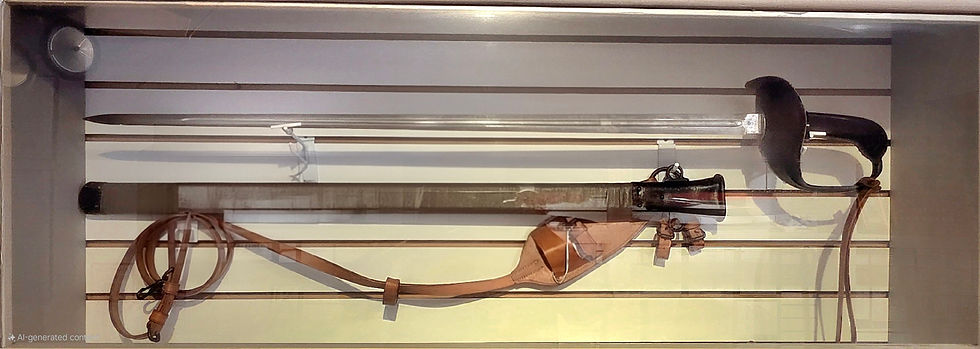ARTIFACT OF THE WEEK - 1914 Patton Saber
- Jacksonville Museum
- Aug 4
- 2 min read

The 1913 Patton Saber was a distinctive development in early 20th–century U.S. cavalry armament. Designed by then–Lieutenant George S. Patton Jr., the saber was the result of both practical observation and formal instruction, incorporating principles learned during Patton’s time at the French Cavalry School in Saumur. Its adoption by the U.S. Army marked a shift in design philosophy, reflecting changing tactics and perceptions of cavalry roles in an increasingly mechanized military landscape.
At the time of the saber’s development, the U.S. Army was still maintaining traditional cavalry units, though its tactical importance was evolving due to technological advancements. Previous saber models featured curved blades intended for slashing techniques, reflecting combat styles suited to earlier battlefield conditions. Patton’s approach, however, emphasized straight thrusting methods, which were deemed more practical and efficient based on his fencing and swordsmanship training.
The 1913 model introduced several distinctive design elements:
· Straight Blade: Approximately 35 inches in length, optimized for thrusting rather than cutting.
· Guard Construction: Included a steel half-basket hilt, offering greater hand protection.
· Grip and Balance: Designed for improved handling and control while mounted, the saber prioritized functionality over ornamental qualities.
These features aimed to provide cavalry troopers with a more direct and tactical advantage in close combat scenarios.
Patton advocated for the use of thrusting techniques over slashing, arguing that a straight, rigid blade allowed for quicker and more precise strikes. His design minimized decorative flourishes and emphasized utilitarian performance. The saber was designed for use in aggressive charges, where speed and accuracy were crucial.
Although officially adopted in 1913, the weapon’s practical battlefield use was limited. By the time the United States entered World War I, trench warfare and mechanized units were supplanting traditional cavalry operations. The saber, while retained for training and ceremonial functions, did not see widespread use in front-line combat.
While the 1913 Patton Saber had a brief operational period, its design marked a conceptual departure from previous cavalry arms. It is now regarded as a traditional weapon- a bridge between traditional cavalry swords and the eventual decline of horseback combat roles. Surviving examples, such as a 1914 model on display in our WWI exhibit, are preserved in military museums and collections, offering insights into evolving combat philosophies during the early 20th century.




Comments